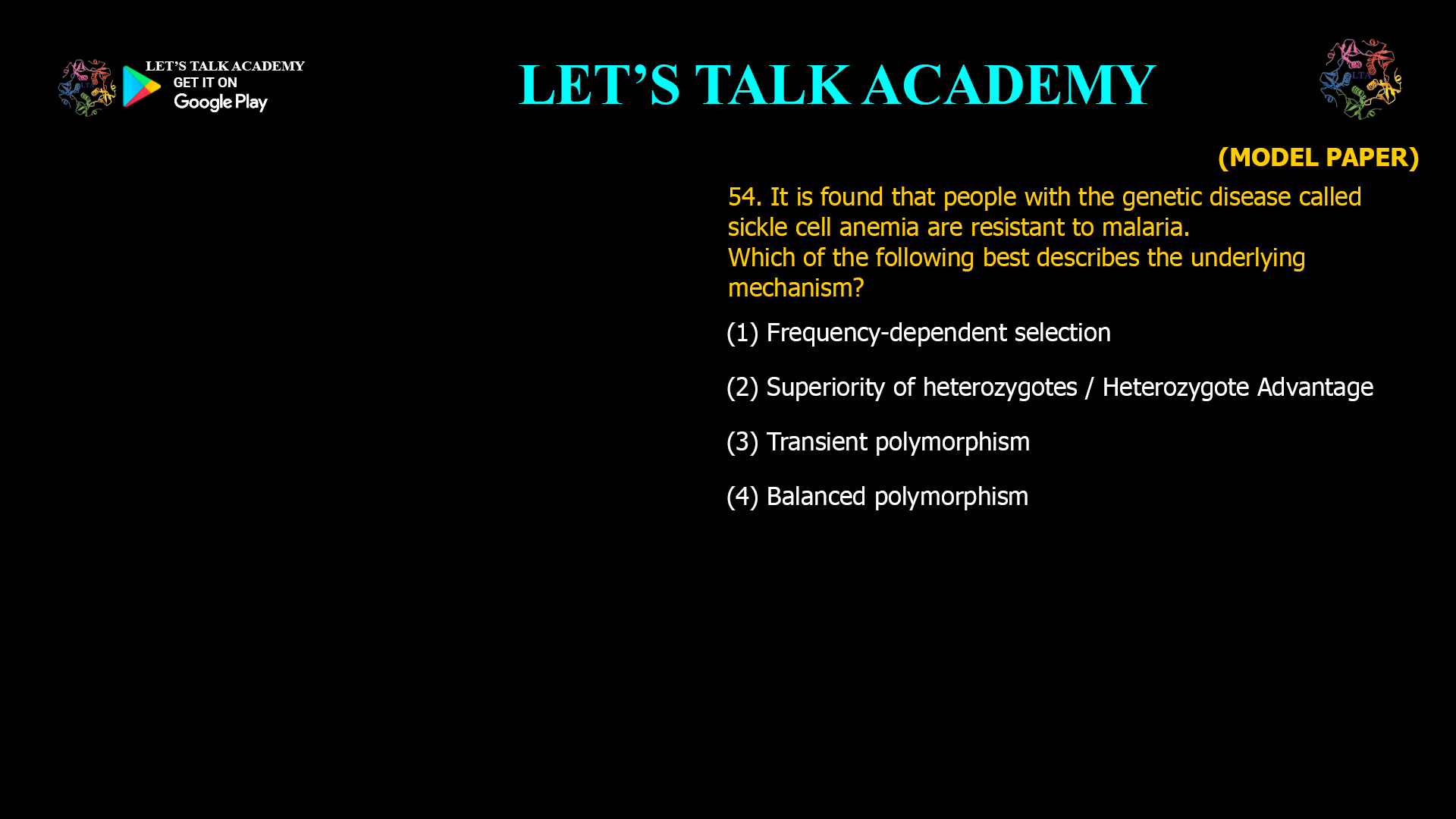- It is found that people with the genetic disease called sickle cell anemia are resistant to malaria. Which of the following best describes the underlying mechanism?
(1) Frequency-dependent selection
(2) Superiority of heterozygotes / Heterozygote Advantage
(3) Transient polymorphism
(4) Balanced polymorphismThe Link Between Sickle Cell Trait and Malaria Resistance
Malaria, caused by the parasite Plasmodium falciparum, is a life-threatening disease that has exerted strong selective pressure on human populations, particularly in Africa, Southeast Asia, and parts of South America. Research has shown that individuals who carry one sickle cell gene (genotype HbAS) are less likely to suffer from severe forms of malaria compared to those with normal hemoglobin (HbAA) or those with two sickle cell genes (HbSS).
How Does the Sickle Cell Trait Confer Resistance?
The mechanism is multifaceted:
-
Impaired Parasite Growth: The malaria parasite does not grow well in red blood cells containing sickle hemoglobin. When infected, these cells are more likely to sickle and be removed by the spleen, disrupting the parasite’s life cycle.
-
Hostile Cellular Environment: The sickling process and the body’s response to it create an environment that is less hospitable for the malaria parasite.
-
Enhanced Immunity: There is evidence that individuals with the sickle cell trait may have enhanced immune responses to malaria infection.
The Evolutionary Mechanism: Heterozygote Advantage
The best description for this phenomenon is heterozygote advantage (also known as the superiority of heterozygotes). In this scenario, individuals with one normal and one sickle cell gene (heterozygotes) have a survival advantage in malaria-endemic areas. They are less likely to die from malaria than individuals with two normal genes, and they do not suffer the severe symptoms of sickle cell anemia seen in homozygotes.
This selective advantage explains why the sickle cell gene remains prevalent in certain populations despite its harmful effects in homozygous individuals. The frequency of the sickle cell allele is maintained at a higher level than would be expected if it were purely deleterious, due to the protective effect against malaria in heterozygotes.
Why Not Other Mechanisms?
-
Frequency-dependent selection: This refers to fitness depending on how common a trait is, not specifically to the advantage of heterozygotes.
-
Transient polymorphism: This describes a temporary presence of multiple alleles, not a stable, balanced state.
-
Balanced polymorphism: While this term does describe the maintenance of multiple alleles, the specific mechanism in this case is the heterozygote advantage.
Conclusion
The resistance to malaria observed in people with sickle cell trait is a classic example of heterozygote advantage. This evolutionary mechanism has had a profound impact on human genetics in regions where malaria is prevalent, illustrating the intricate interplay between genetics, disease, and natural selection.
Correct answer:
(2) Superiority of heterozygotes / Heterozygote Advantage -




3 Comments
Manisha choudhary
October 5, 2025Superiority of heterozygotes / Heterozygote Advantage
Manisha choudhary
October 5, 2025Option 2 is correct answer
Superiority of heterozygotes / Heterozygote Advantage
Sonal Nagar
November 14, 2025Superiority of heterozygotes / Heterozygote Advantage